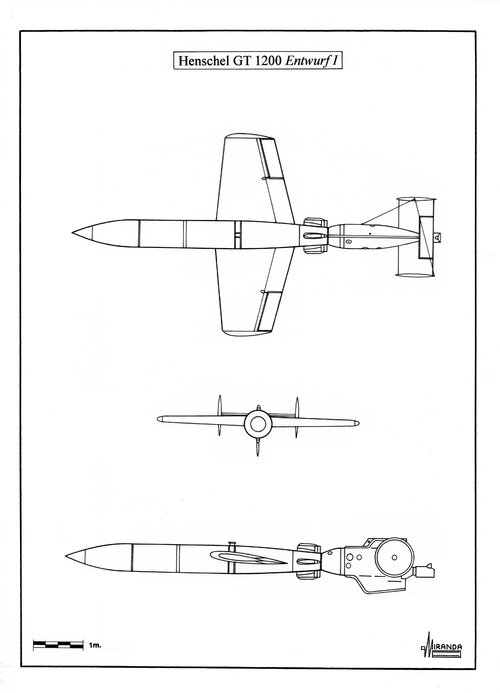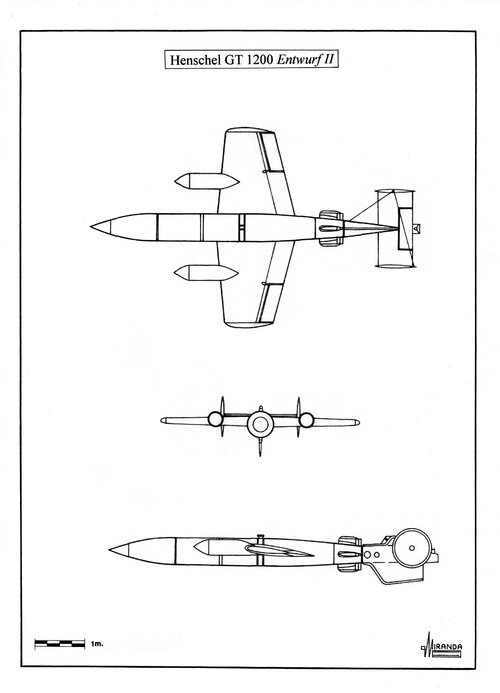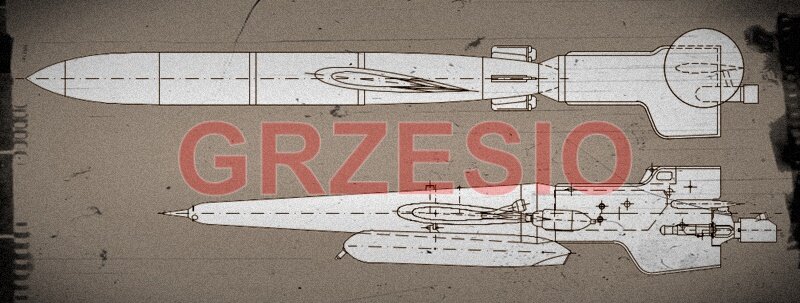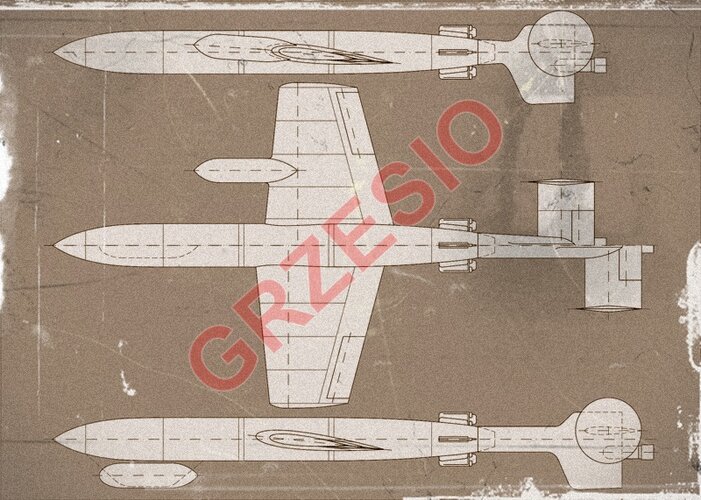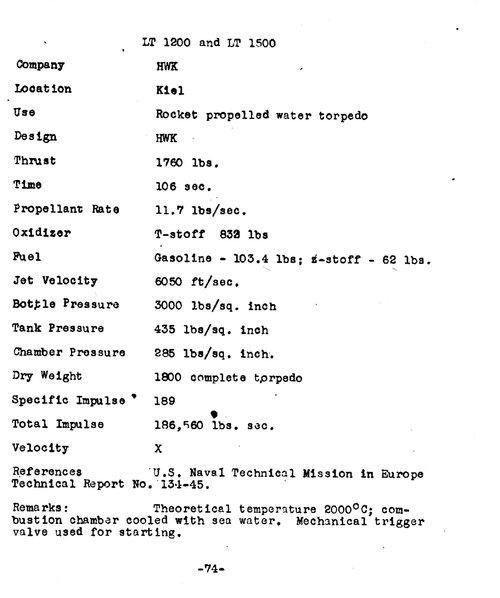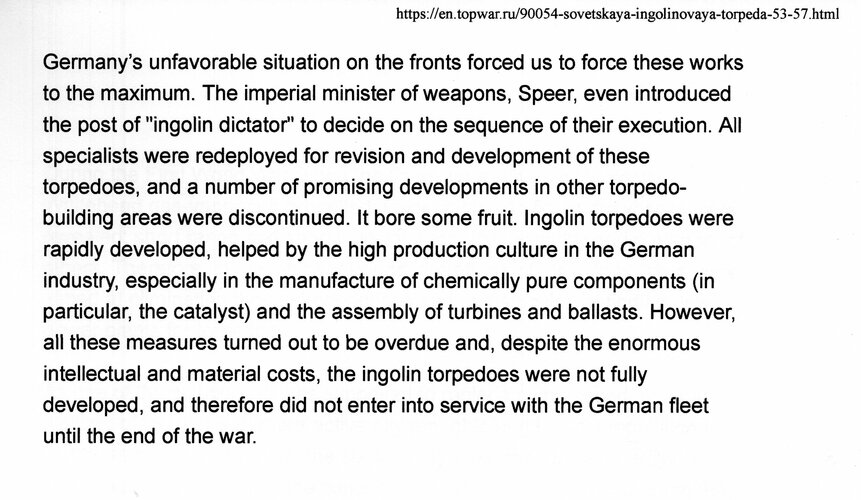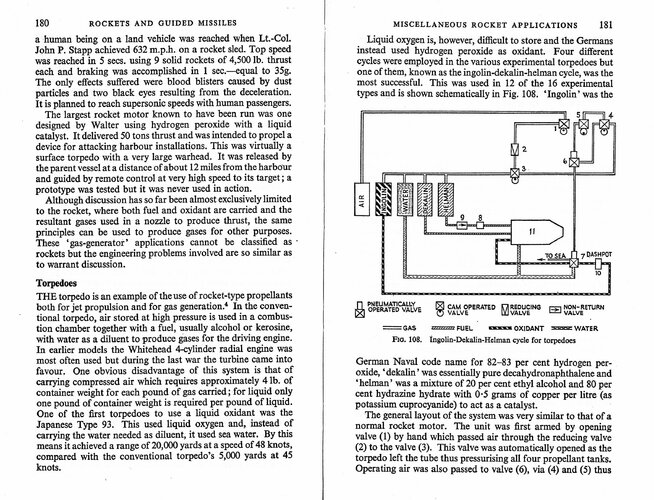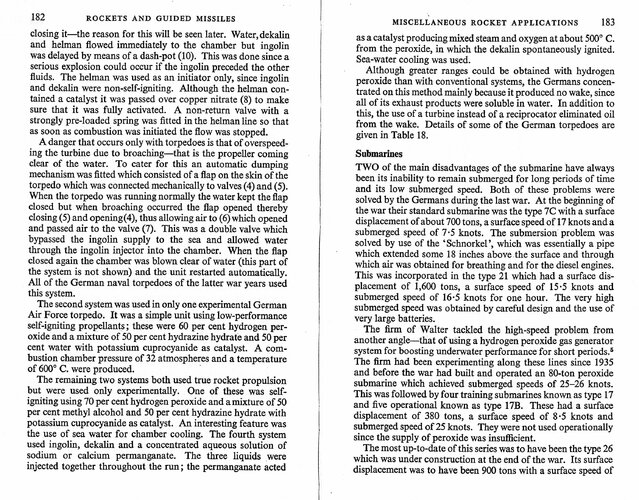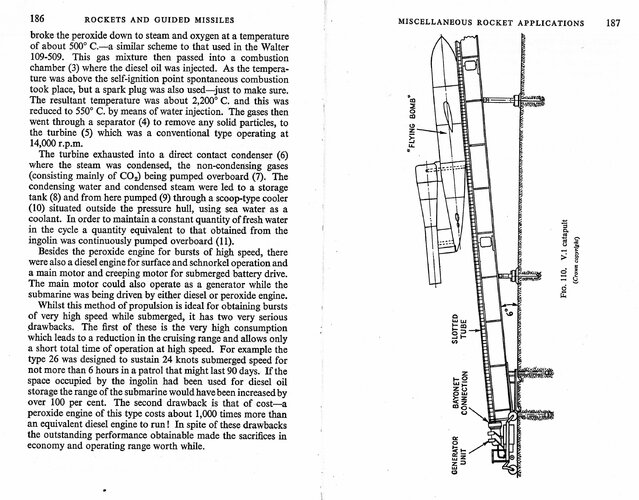Henschel GT 1200
By the beginning of 1937, Dr Lorenz of Technisches Amt (Luftwaffe’s Technical Office) was sponsoring the Walter HWK RI-203 rocket engine that promised enormous power for its weight.
This engine used compressed air to force a weak concentration of mono-propellant hydrogen peroxide into a reaction chamber, lined with a paste catalyst, which instantly changes it into water and oxygen. The reaction is so violent that the water emerges as superheated steam, able to provide 350 kg thrust after accelerating in the venturi nozzle.
In 1941 Dr. Hellmuth Walter designed two rocket engines for torpedo propulsion that used different combinations of hydrogen peroxide and catalysts.
-The HWK RII-203, with 760 kg peak thrust, used hydrazine hydrate and potassium cuprocyanide.
-The HWK 109-501, with 1,000 kg peak thrust, used Dekalin and Z-Salz.
The Kriegsmarine was not interested in this type of torpedo because of its limited underwater range.
But the Luftwaffe considered this not to be a problem if the new propulsion system was used in torpedo gliders.
In 1942 Henschel developed two torpedo-rockets of 450 and 533 millimeters under the codename LT 1200. To launch them from aircraft, it was also necessary to develop three types of gliders under the codename GT 1200.
Henschel engineers decided to use wings, tail assembly and radio-guidance system of the Hs 294 missile.
After the torpedo hit the water surface, the wooden glider broke off igniting the rocket engine by means of one mechanical trigger valve.
The torpedo tailfins were designed to cool the combustion chamber (500 to 2,000ºC) using sea water.
The GT 1200 program was cancelled in mid-1943 due the explosive nature of hydrogen peroxide.
During the war hydrogen peroxide received the codename Aurol for ship propulsion, T-Stoff for aircraft and missile engines and Ingolin for torpedo propulsion (turbine and rocket).
Henschel GT 1200 Entwurf I technical data
Wingspan: 4,104 mm, length: 7,350 mm, height: 1,100 mm, wing area: 5.3 sq. m, torpedo diameter: 533 mm, torpedo weight: 1,295 kg, total weight: 1,800 kg, torpedo warhead: 330 kg H.E. with magnetic proximity fuse, air speed: 35 m/sec, underwater speed: 38 knots, drop speed: 360 km/h, drop height: 70 m, air range: 2,200 m, underwater range: 900 m, power plant: one Walter HWK RII-203 rocket motor with 760 kg peak thrust and 106 seconds of life, guidance system: FuG 203 Kehl III/FuG 203b Strassburg mounted in the detachable tail cone.
Henschel GT 1200 Entwurf II technical data
Wingspan: 3,400 mm, length: 5,570 mm, height: 1,100 mm, wing area: 5.3 sq. m, torpedo diameter: 450 mm, torpedo weight: 1,200 kg, total weight: 1,200 kg, torpedo warhead: 450 kg H.E. with magnetic proximity fuse, air speed: 40 m/sec, underwater speed: 40 knots, drop speed: 360 km/h, drop height: 70 m, air range: 4,400 m, underwater range: 1,200 m, power plant: one Walter HWK 109-501 rocket motor with 1,000 kg peak thrust, guidance system: FuG 203 Kehl III/FuG 203b Strassburg mounted in two nacelles in the leading edge of the wings.
The Henschel GT 1200 Entwurf III was a modification of Entwurf II with the radio-guidance system replaced by one infra-red homing seeker mounted under the torpedo warhead in a chin-shaped nacelle.

